4D Interview | Reveal the story behind "crypto cat" and the killer of "Flow"
Guide: Speaking of "cryptocat", everyone can say that the name is in the circle of the blockchain. This game that blocked Ethereum as soon as it came online at the end of 17 has shown everyone the imagination of Dapp and NFT charm. Over the past two years, a series of news has been circulating on the cheese wizard, Dapper Wallet, cooperation with the NBA and UFC, huge financing, and the Flow public chain. As the team behind them-Dapper Labs, what exactly do they want to do? What is the logic behind this series of operations? This time DappReview interviewed the founder and CEO of Dapper Labs, Roham Gharegozlou. Through this nearly 4D interview, we can know a little or two.

The following is the full interview between DappReview CEO Vincent and Dapper Labs CEO Roham, translated and edited by DappReview.
- Counter-mainstream, new commune and blockchain: a movement spanning 60 years
- What is the reason for Tether's crazy increase in USDT?
- Opinion: Miners surrender, hashrate plummets, selling pressure weakens, Bitcoin is expected to rebound in the near future
Vincent: Let's start with "cryptocat" (editor's note, the official translation of CryptoKitties is "mysterious cat", but players often use "cryptocat"). At the end of 2017, "cryptocat" began to spread virally around the world, attracting countless players to collect, breed and trade these cute kittens, becoming the first phenomenal dapp. My friends and I spent a lot of time researching their DNA data to figure out how to breed expensive kittens. We found some basic rules and successfully bred Christmas kittens, sold them and made some ETH. The "cryptocat" was successful not only because of these cute kittens, but actually because it was the NFT concept, or the ERC-721 token first appeared in public. So what's the story behind Crypto Cat and ERC-721? How did you come up with this idea and did it succeed?
Roham : ERC-721 is an NFT standard. Our CTO Dieter Shirley came up with this standard even before we started making CryptoKitties. We realize that most assets in the real world are heterogeneous: they are unique, independent, and private to their owners. Only money and other commodities are homogenized. Whether we talk about art, real estate, or in-game assets, everyone's favorite is undoubtedly heterogeneous assets.
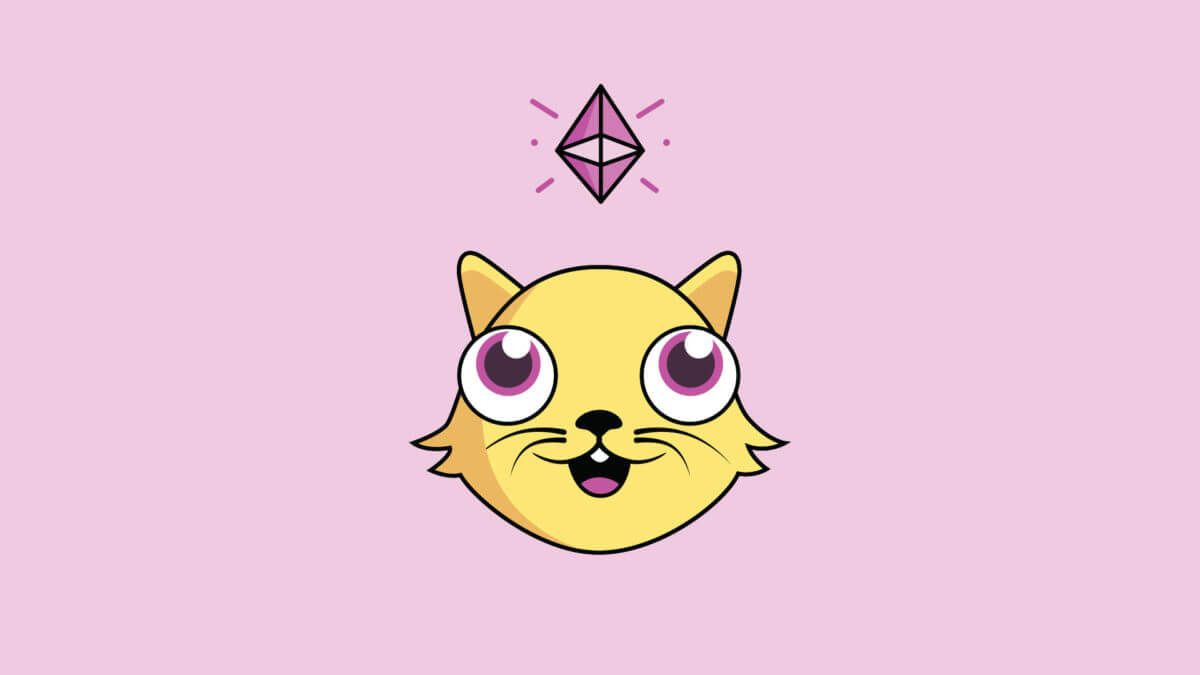
The purpose of our production of CryptoKitties is to demonstrate NFT, and to prove that blockchain can be applied outside the field of decentralized finance. We believe in the future of DeFi, but we also want to show the world that crypto tokens have more practical uses besides speculation and finance. It turned out that we were right. People from all walks of life are attracted by CryptoKitties, and quickly understand the value of the blockchain for the experience: the assets that always belong to you, the scarcity of digital assets, and the global circulation trading market.
The first person to propose the "blockchain cat" concept was our chief creative officer, Mack Flavelle: We know that cats rule the Internet, so it is reasonable to say that they will eventually break into the blockchain. Throughout the summer of 2017, we only had a small team to shape the prototype of smart contracts for CryptoKitties. We released the original prototype at the EthGlobal Event in Waterloo, which caused a lot of sensation, so that we recruited dozens of people to the team almost overnight, and completed it in less than a month Most of the graphics and UI design.
It is worth noting that CryptoKitties was originally conceived from Axiom Zen, which was founded by my brother Sam and me in 2012 and has won numerous award-winning startup studios. That's why we can quickly scale up our team.
Vincent : So why did you divest the team from Axiom Zen?
Roham : The successful "experiments" of CryptoKitties and NFT have had an exciting impact on the cryptocurrency community as well as mainstream games, music and the art community. Let us deeply impress mainstream users and entrepreneurs with this distinctive experience. Expectations. But every time the number of CryptoKitties users exceeds a thousand, we will encounter technical bottlenecks. Poor user experience design has directly cost our users: This is because the infrastructure is not ready to enter the mainstream user market. Therefore, we decided to focus most of our team's future energy on developing blockchain infrastructure and killer application development and commercialization. We now have nearly 100 full-time employees, which may be considered as small companies in China, but we are one of the largest and most dedicated independent teams in the world to study blockchain development platforms and dApps.
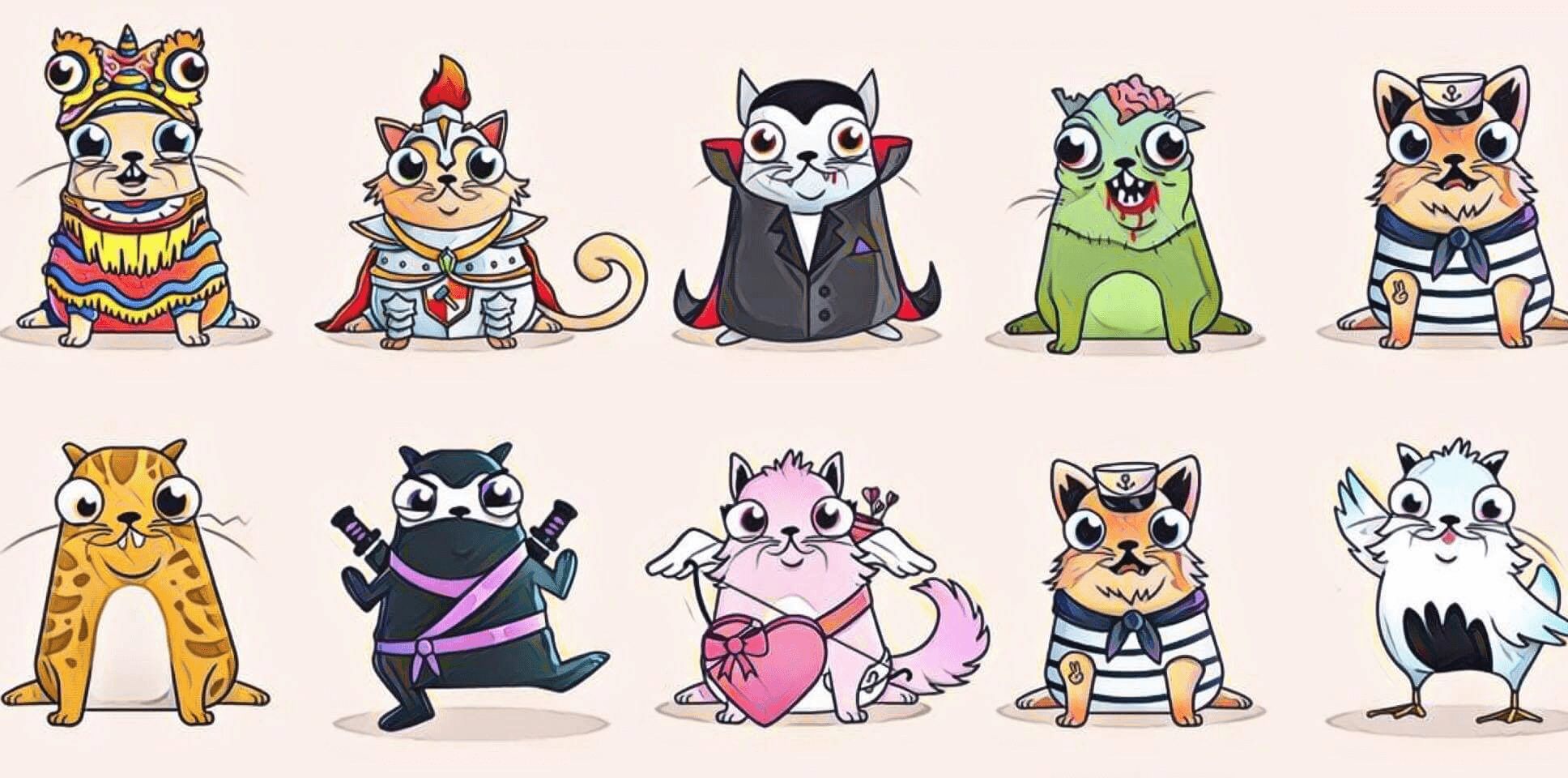
Our new company, Dapper Labs, raises money from the best investors in the world and started building our own blockchain infrastructure in 2018.
Our plan is to start from the user experience we want to reach, and technically go all the way down to our needs until we meet our needs. Two years later, we are about to launch Flow, and we believe the platform will change the rules of the game for crypto applications.
Vincent: When you launched this CryptoKitties, did you think that this game would reach such a scale and attract hundreds of thousands of people, breeding millions of kittens in it? Or did you just think this was a good idea to try?
We have been following the development of the game very closely, so when we first tried it out internally, we knew that we had created a really cool thing. We spent a lot of energy on the initial version released at the EthWaterloo conference, and it all paid off: the community obviously liked the game at the time and gave us a lot of good feedback, which also filled us with the success of the game. confidence.
Of course, really, we did not expect CryptoKitties to become the most well-known brand in the crypto field after Bitcoin. We know we will attract a lot of old players in the crypto space, but the degree to which CryptoKitties resonates with people from all walks of life surprised us. We already have the ability to enable a wide variety of people (and large vendors) to understand crypto technology and to make them interested in decentralization, even if they have no interest in the impact of cryptocurrencies in the financial sector.

We are grateful and happy for the fans' love. We have a responsibility to bring this brand into the mainstream world. On Flow, CryptoKitties will show its full potential (yes, our crypto cat will return to your vision with a new experience in the near future).
Vincent: One year after CryptoKitties went live, you introduced us to Dapper Labs in a Medium post. Over the past year, we have also heard a lot of good news, such as a16z and USV leading a US $ 12 million financing and the kittyVerse project. Apart from these, what are you mainly doing. How do you position CryptoKitties when discussing other long-term projects within the company?
Roham: We started the technical development of Flow very early.
CryptoKitties was launched in December 2017. We realized after a few weeks that the limitations of Ethereum prevented us from building a stable business model with CryptoKitties. We also know that if we fail on other chains, it is a risk of survival for us.
That's why we transferred CryptoKitties to the independent company Dapper Labs and got financing from USV and a16z. Dapper Labs was announced in March 2018, although it was not called at the time.
Within a few months, we learned about the core work of Flow: separating consensus from computation. Two months after the establishment of Dapper Labs, we applied for a provisional patent in May 2018. We then spent a year verifying our initial understanding with our academic research consultant (also my mentor at Stanford University), and completed the construction of the structure related to the blockchain concept.
During that time, we kept experimenting on Ethereum to test and learn with real players. We keep CryptoKitties alive by focusing on a small community of niche but real players and fans, not speculators. Since its launch, CryptoKitties' smart contracts are the most active on Ethereum every year. In 2019, we executed more than 2 million on-chain transactions, more than any C-end Dapp.
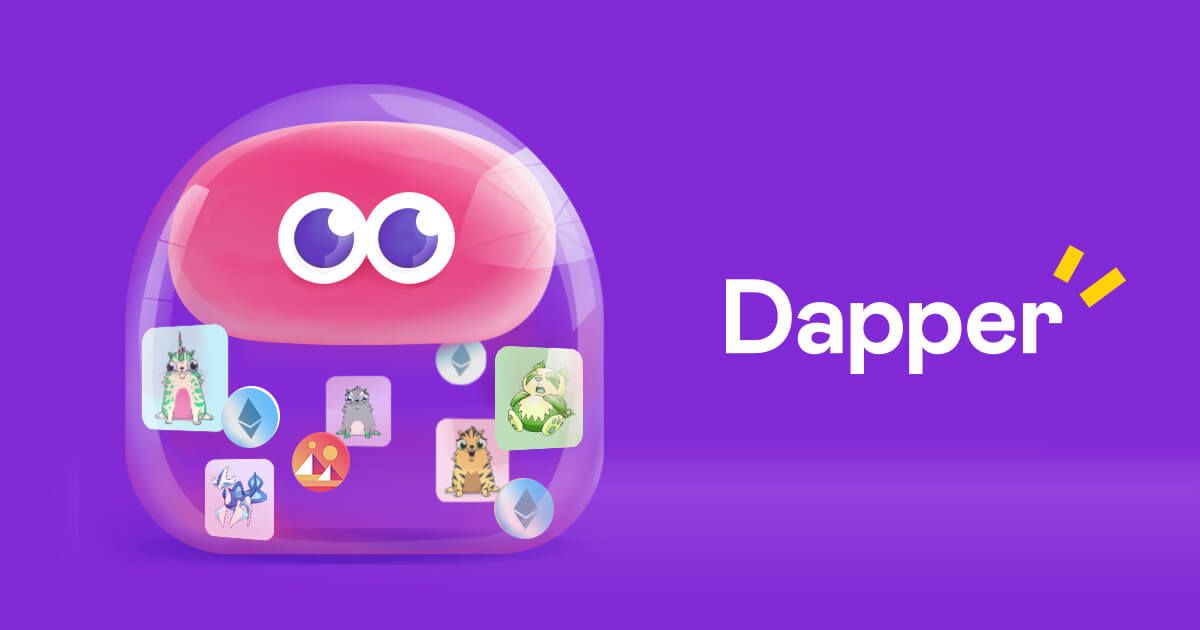
We also launched the first smart contract wallet for C-ends in early 2019, Dapper wallet, which allows users to hold assets and trade in cryptocurrencies without worrying about mnemonic words or private keys being lost. Dapper wallet has more than 25,000 users on Android and Chrome. This is also a test and verification of our user experience.
The most important thing is that we have in-depth discussions with several of the most important household brands in the world, how to implement encryption technology and blockchain technology in the product experience, and bring their billions of fans into this world, We have a deeper understanding and a more practical plan than anyone in terms of technology. We have worked with some of the top teams in the crypto space to understand the needs of developers to ensure that Flow is developed for everyone (not just us). platform. Well-known brands that have been announced include the NBA, UFC and Warner Music.
Vincent: Throughout 2018, many projects tried to replicate the success of CryptoKitties, and most of them were essentially Ponzi schemes, such as I think, like crypto countries, crypto celebrities, etc. You buy a worthless NFT and sell it at a higher price to make a profit. People use uniqueness, true ownership, and openness to exaggerate the value of assets on the chain. As a team and early adopter of the drafting of the ERC-721 standard, compared to most people, you definitely have a more thorough understanding of the nature of blockchain assets. So how do you see the development of NFT in areas such as games and art. And have your ideas changed, especially in the past 2 years?
Roham: First of all, I must agree with you that after CryptoKitties, many "quick follow-up" projects are only weakening the value of the blockchain. Their products are simple, consumers are smart, and they quickly learned from real players that these are scams. Unfortunately, CryptoKitties has also proved to the world that the scalability of ETH is extremely limited, which has also scared away many big manufacturers who are serious about wanting to build something in the blockchain field.
Games and exchanges are still the mainstream on ETH, but their success is still limited by scalability and high transaction costs. We have been impressed by some amazing enthusiast communities on ETH, and some independent game development teams have also created some sticky products. For example, let's take the latest, projects like Avastars have set new standards for NFT's on-chain data validity, and artists like Josie Bellini have also astounded collectors.
The future of NFT should not be a niche, difficult-to-use user experience, but it should be like the most advanced games and applications used by consumers today. We believe that NFT will eventually be integrated with social products such as Twitter and Douyin, or with their decentralized versions.
In the long run, for art, games, and collectibles to be successful, we need a low-cost, low-latency, high-throughput, and development-friendly platform. This is why we created Flow. Consumers expect high-quality user experiences and low volatility prices so they can introduce these products to their friends. When something is useful to consumers, it can quickly attract millions of users.
Vincent: In May 2019, you released Dapper wallet and a new game, CheezeWizards. For many people, Dapper Labs started developing infrastructure products such as crypto wallets, not just applications, which surprised many people. But if we look back when you first introduced Dapper Labs, you mentioned that one of your goals was to "accelerate the development of infrastructure and tools to help more participants join the entire ecosystem." Wallets obviously play an important role in this. And Dapper wallet provides users with a completely different experience in blockchain interaction and account management. Is there any story behind this design? And what are your plans for the future of Dapper wallet? How will it apply to Flow's economic system?
Roham: We have to develop a Dapper wallet on ETH. We hope players can more easily open CryptoKitties and our other products. From clearer guidance to paying gas for users, we have been working hard to find ways to make on-chain interaction easier. We also learned a lot through the process of building a Dapper wallet on Ethereum. What you have learned will play an important role in the experience of getting users to join Flow. Usually we learn in development. We don't like theory, but we like to experiment in real life. Dapper wallets are good for consumers and for us to learn from them. Thanks to Dapper, all applications can be easily launched on Flow. To succeed, Dapps must make mainstream consumers feel safe and familiar, while also providing the benefits of decentralization.
Having said that, Dapper Labs has always had the DNA to develop infrastructure-type products: products we have launched, such as ZenHub (one of the most popular developer collaboration solutions in the world) and Routific, a leading routing API platform. Another co-founder of Dapper Labs, Mik Naayem, was formerly the founder and CEO of Fuel Powered, a real-time operating platform for mobile games that had grown to a company with 225 million users before he quit in 2016. Dapper Labs' engineering team also has experience developing blockchain projects such as Bitcoin, ETH, R3 Corda and Quantstamp, as well as building mission-critical infrastructure for companies such as Apple, Microsoft and Akamai.
Vincent: Regarding CheezeWizards, what was the original intention of developing this game? In my opinion, it is more like a social experiment than a real game. Honestly, user engagement is much lower compared to CryptoKitties. Did CheezeWizards meet your expectations?
Roham: We like to learn by doing, so when we wanted to try a new game different from CryptoKitties, we started doing it. We want to continue to develop products of great artistic significance to keep players entertained. We feel like we did it. We like wizard culture. Whenever we attend an event, people ask us what Cheeze Wizards plans for the next step. The players involved in the game are actually particularly active.
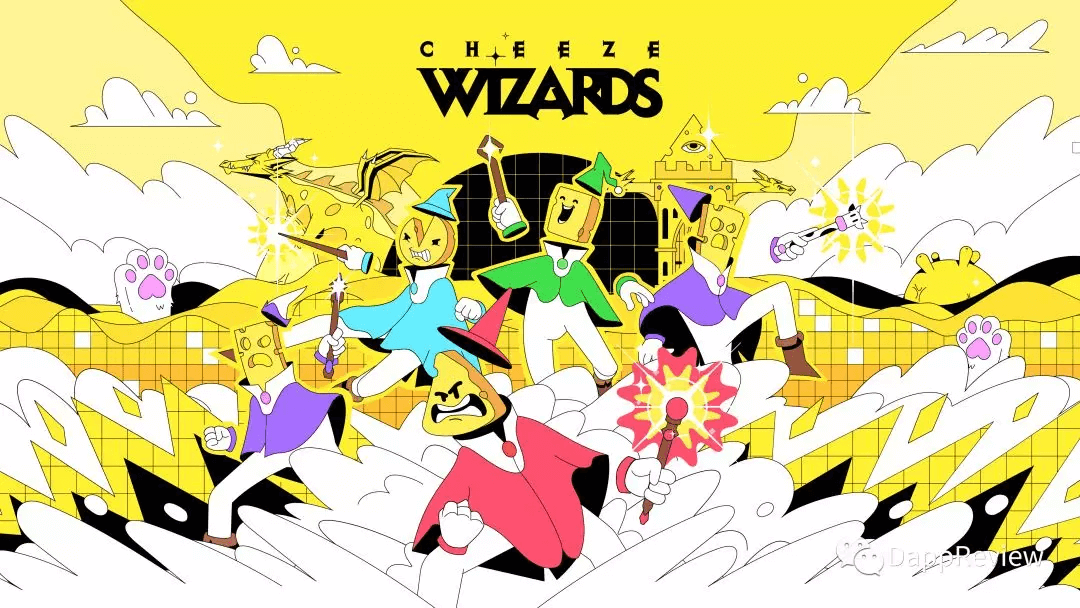
We also want to make a great PvP tournament game, of course it is more difficult. Cheeze Wizards pushed Ethereum to the limit in a different way than CryptoKitties: the smart contract capacity ended up being only 20 bytes less than the EVM (Ethereum Virtual Machine) limit. Due to scalability and latency issues, we had to set a specific time for the tournament, which made it difficult for people to play across time zones. This is an important experience, from which we know that our players are all over the world, and we now know more about how to build great gaming experiences in different time zones.
Vincent: Next, in the two games CryptoKitties and CheezeWizard created by Dapper Labs, what proved to be correct and what proved to be wrong? (It can also be some conjectures or expectations you made when creating the game)
Roham: From the beginning we thought that people were willing to play blockchain games, which proved to be correct. They value the benefits of crypto technology, even if they are not fans of cryptocurrencies. We also proved that people would be willing to pay extra to "enjoy their fun". True ownership has changed the way people view their investment in fun and has increased their emotional connection to the game.
Users spend 10-100 times more on NFT assets than ordinary digital assets, because NFT guarantees authenticity, scarcity and true ownership, which in turn indicates that NFT assets are tradable. As an owner, I can sell my assets at any time I choose. Even if the sales revenue of Gen 0 cats is not included, the ARPDAU of CryptoKitties is 2-3 US dollars (more than 13 US dollars during Gen 0 cat sales), and most mobile games are 0.05-0.40 USD.
Blockchain games also have an amazing life span. For example, CryptoKitties on ETH was initially designed as a one-year experience: we introduced new genes in the sales of Generation 0 cats, and the last batch was sold in December 2018. Even so, CryptoKitties is still one of the largest brands and communities in the blockchain world.In 2019 alone, there were more than 2 million transactions and the average expenditure per paying user was close to $ 200.
Vincent: Indeed, I remember that according to our numbers, card games like GodsUnchained, players in the blockchain circle pay an average of $ 300, and I have invested hundreds of blockchain games myself. Thousands of dollars. These are indeed verified, so what logic is falsified? Or what are the lessons?
Roham: One obvious mistake we made was how much throughput the blockchain can support. We didn't expect that Ethereum would crash because only a few thousand people played the CryptoKitties game. We also underestimated the difficulty of Solidity and the limitations of EVM: in the early days, we tried to maintain compatibility as much as possible before deciding on a new approach.
On CheezeWizard, we also made a mistake, that is, we did not build any type of contract upgrade capability. The community has found some bugs, and if we can upgrade our contract, these bugs can be easily fixed. Instead, we had to solve the problem in a more complicated way, which greatly increased the workload of our team (many emergency meetings and overnight work).
Vincent: Let us now enter the most exciting part-the blockchain project Flow you are building. I don't want to go into the technical details here. Flow's website has three very detailed technical papers that discuss the core architecture, such as separation of consensus and block composition. I am more interested in when and how did the idea of the Flow protocol come about?
Roham: Because of the network congestion we caused, Flow was born almost at the same time as CryptoKitties. If thousands of users can paralyze the network of our application, then we cannot ignore this platform risk.
Within a week or two after launching CryptoKitties, we knew we needed to find a solution to the scalability and usability issues. We conducted in-depth research on dozens of blockchains, met with top teams in the field, and concluded that we need our own platform.
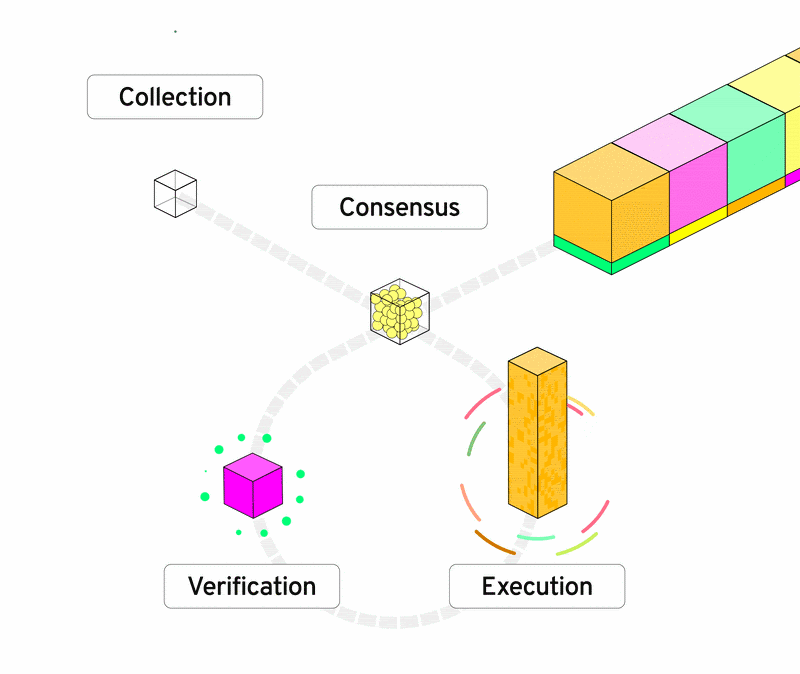
We will continue to update Blocking; if you have any questions or suggestions, please contact us!
Was this article helpful?
93 out of 132 found this helpful
Related articles
- Privacy solution ZK² Rollup: how to achieve high-speed, cheap privacy transactions on Ethereum
- CoinMarketCap reveals 0th cryptocurrency, ahead of Bitcoin
- Bitcoin experienced its worst plunge in March, will the cryptocurrency bubble burst?
- Market analysis: The resistance above BTC is large, waiting patiently for admission
- Asia has set off a boom in virtual banking, and native banks have broken the cocoon in the digital currency era
- Coinbase CEO: Almost every economic field is struggling, and Bitcoin is the currency people need at this moment
- New Korean law proposes ban on crypto asset mortgage lending, DeFi platform may be banned





